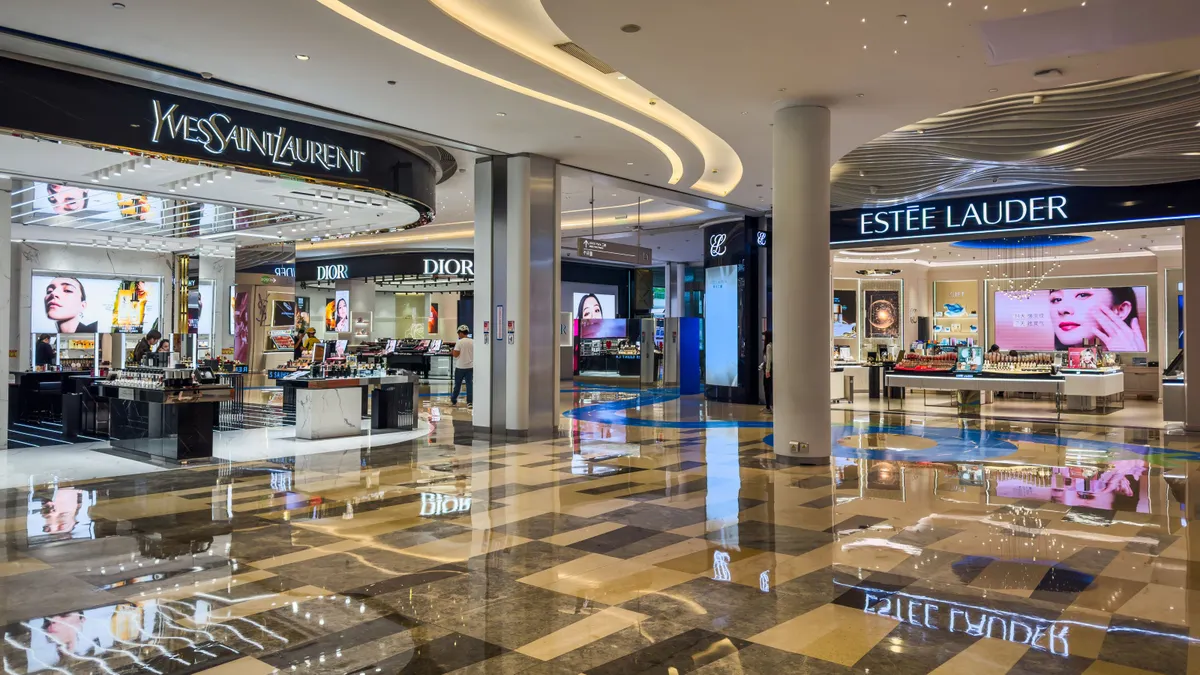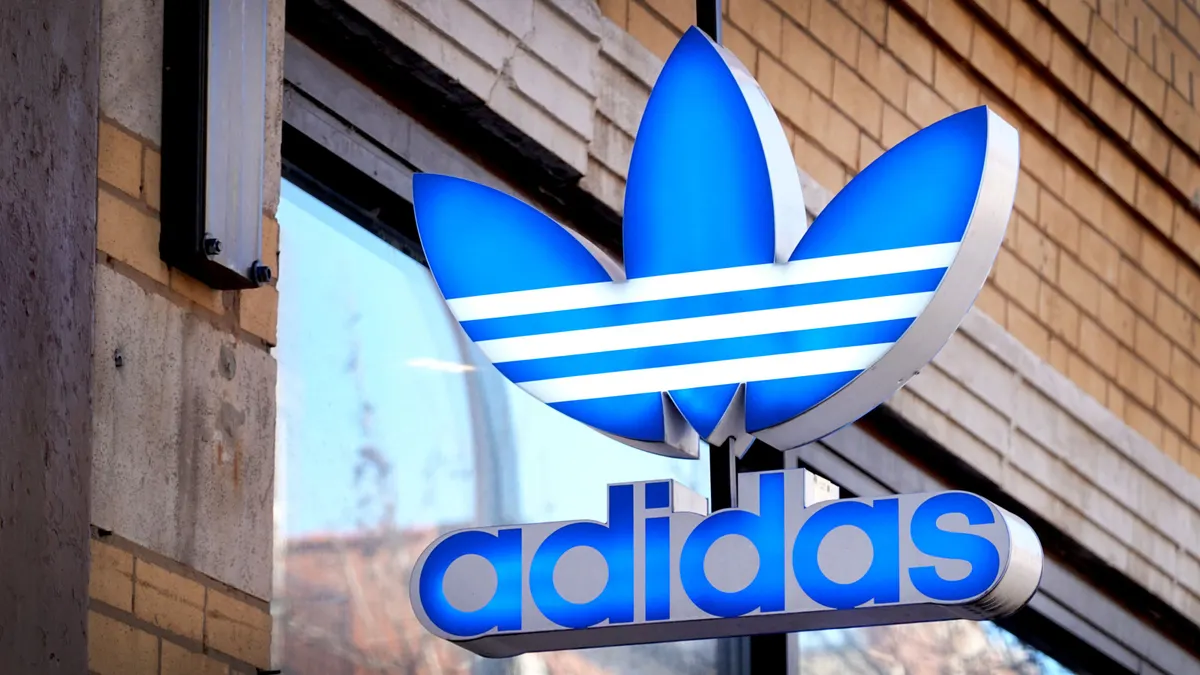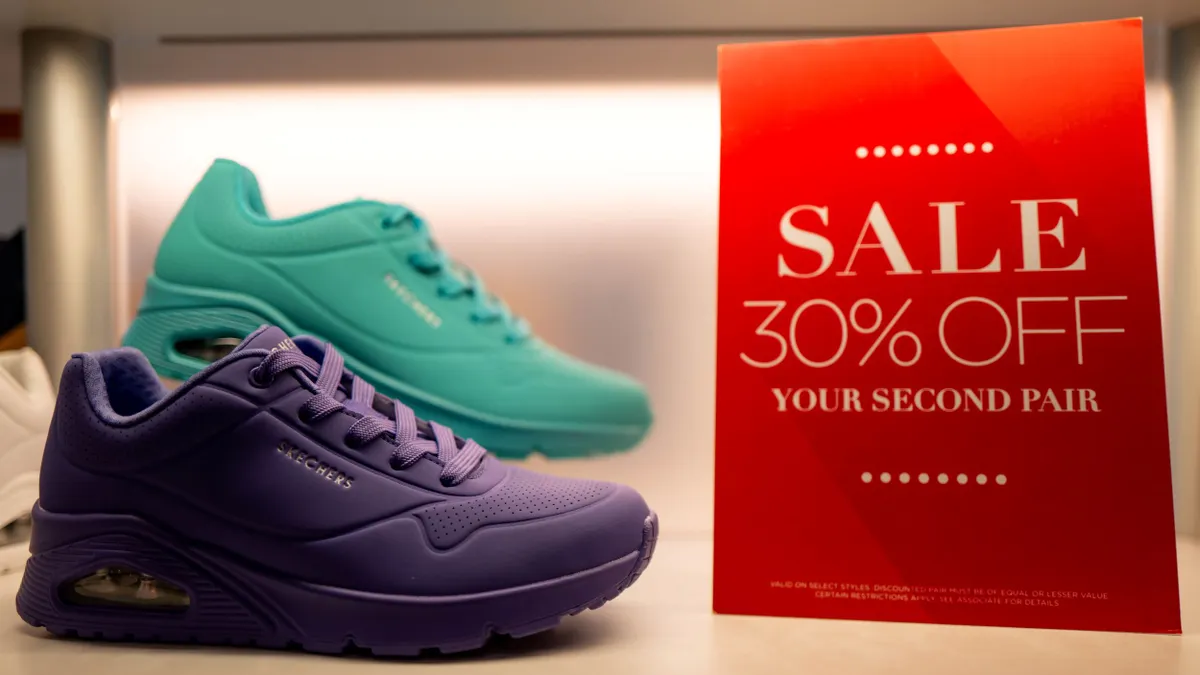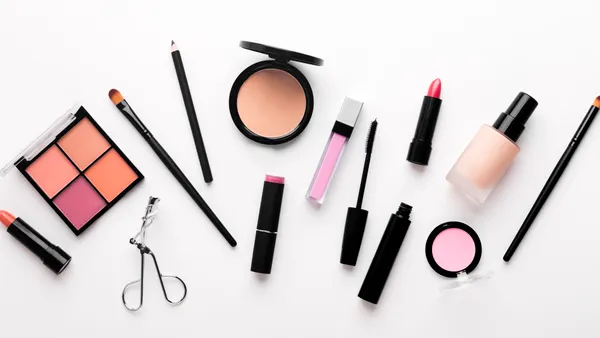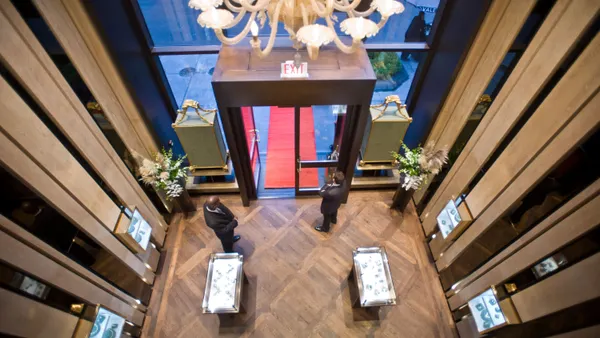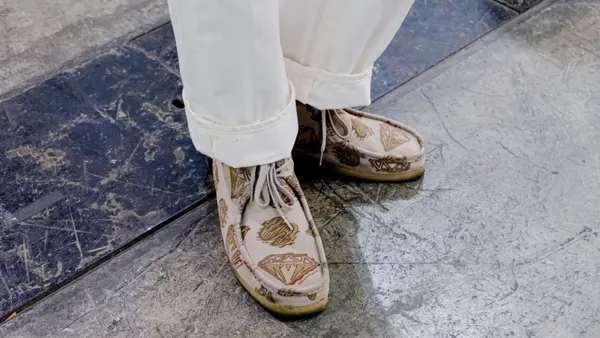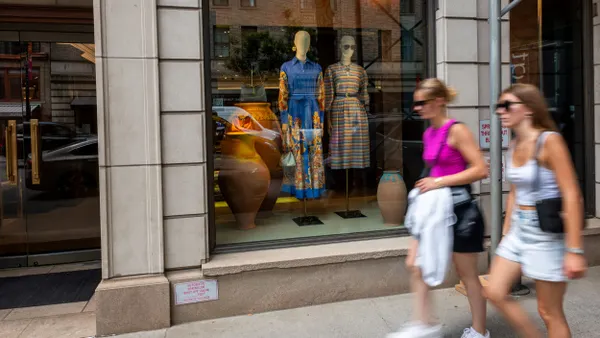Dive Brief:
- The personal luxury goods market is expected to experience a full-year contraction of between 2% and 5% in 2025, according to a new report from Bain & Company, in partnership with Italian luxury goods industry association Altagamma.
- Against this backdrop, the jewelry, apparel and eyewear sectors remain strong, with “uber-luxury” items and products in the aspirational segment doing especially well, per the report. However, watches, leather goods and footwear “are facing headwinds unless backed by true innovation.”
- Meanwhile, geopolitical challenges and regulatory oversight have stressed supply chains, and more than 70% of luxury brands have pulled back volume from multibrand retail platforms amid financial struggles, per the report.
Dive Insight:
Despite what Bain said was “a relatively upbeat end to 2024 for the luxury sector,” the report cautioned that “turbulence may be luxury’s new baseline for an extended period.”
The overall luxury industry is worth about 1.5 trillion euros, or about $1.8 trillion, according to the report. Yet growing economic turbulence, as well as complex social and cultural shifts, have forced the global luxury sector to confront “its most far-reaching disruptions — and its biggest potential setbacks for at least 15 years.” This is the first slowdown since the global financial crisis of 2008 to 2009, excluding the temporary shock of the Covid-19 pandemic.
There has been a widening performance gap between top-performing brands and companies that are struggling. In the first quarter of 2025, this gap, as measured by relative revenue growth of brands, widened to 1.5 times the size compared to the same period last year, per the report.
Bain added that “the creative leadership that is vital to the sector is under strain and rotating across brands.” More than a dozen companies have made designer changes in 2025 so far, including at Dior, where former Loewe Creative Director Jonathan Anderson now leads women’s, men’s and haute couture.
Federica Levato, senior partner at Bain & Company and one of the report’s authors, said in an email that growth in apparel, jewelry and eyewear had come despite this “notable polarization across brands and sub-categories.”
Levato added that the clientele for jewelry and apparel depends on economically resilient high-net-worth consumers, which has helped those categories stay resilient.
“[M]oreover, especially for apparel, overall market growth is favored also by the presence of ‘accessible luxury’ players that are benefitting from higher-end consumers’ downtrading,” Levato said.
On the other hand, makeup, watches, leather goods and footwear are all suffering from their strong exposure to aspirational consumers, Levato said. Those shoppers are pulling back “amid financial strain and shifting priorities.”
In particular, makeup is suffering from “the fading of the lipstick effect,” Levato said, referring to an economic theory positing that when the economy hits a downturn, consumers are more likely to purchase affordable luxury products, such as lipstick.
In terms of the leather, footwear and watch categories, Levato said that what consumers often perceive as an “unjustified price-value equation built over the years” has weakened the appeal of some brands.
However, Levato added that although there has been a lack of fresh creative injection and accessible entry points, especially in footwear and leather goods, both categories have outperformed the rest of the market over the last 15 years.
Luxury brands also have to grapple with growing disillusionment among younger customers. That will be especially relevant over the next five years as more than 300 million new consumers enter the market — over half of whom are Generation Z or Generation Alpha — contributing to what Bain projects will be a 20% increase in the number of high-net-worth individuals.
“Brands must rethink how they engage with younger generations, shifting from transactional relationships to building meaningful, emotionally resonant connections,” Levato said. “This includes crafting compelling brand narratives, demonstrating cultural relevance, and offering value beyond the product. The timing and strength of the recovery will therefore hinge not only on macroeconomic and geopolitical developments, but also on how swiftly and effectively brands respond to this new consumer landscape.”



